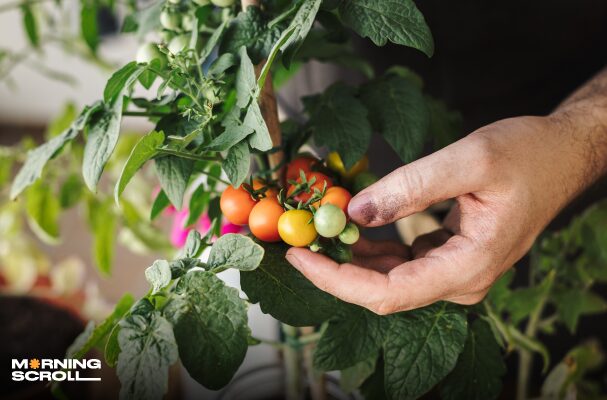Kitchen garden process
Starting your kitchen garden is a fulfilling experience. Owning vegetables and herbs will ensure you always have a supply of fresh, homegrown produce. So, if you were looking for a sign, here are 10 Easy steps to start your own kitchen garden:
1. Clear a Space

First and foremost, ensure your kitchen has enough room to accommodate a garden. A cozy spot near the windows that receives some sunlight will be ideal.
2. Choose the Location

After confirming that your kitchen has sufficient room, the next step is to pick the right spot. Find an area that receives plenty of sunlight and won’t interfere with your daily cooking activities.
3. Plan what to keep where

Decide what you want to grow and allocate the appropriate space for each plant. For instance, mint spreads extensively and needs more room than a cherry tomato plant. Plan accordingly.
4. Soil Requirements

The next step is selecting the soil. Remember that soil attracts insects just like plants do, so choose a type that isn’t too sandy or dry and won’t spoil your kitchen.
5. Select Your Plants

After setting up, visit your local nursery to choose your plants. For beginners, consider starting with options like mint, tomatoes, and basil.
6. Begin with a Small Section and Pot

If you’re just starting out with gardening, it’s wise to begin on a smaller scale. Instead of using the entire area for pots and containers, utilize about half of the space initially and expand as your plants thrive.
7. Planting Time

Timing is crucial in gardening. Sow the seeds or plant the cuttings based on the appropriate season. Consult with a local gardener to determine which herbs are perennial and which are seasonal.
8. Water It Well

After planting the seeds or cuttings, the next step is to water them properly. In the beginning, use plain water with no additives. Once the leaves and stems begin to grow, start using enriched water like rice water or banana peel water for better nourishment.
9. Mulching

Every garden benefits from mulching, regardless of its location. For a small kitchen garden, using organic mulch such as wood chips or leaves is the best.
10. Monitor Your Plants

Frequently inspect your garden for pests and diseases. Remove any weeds that compete with plants for resources. Prune as necessary to promote proper air circulation and growth. Soon, your plants will be ready for harvest and enjoyment.


